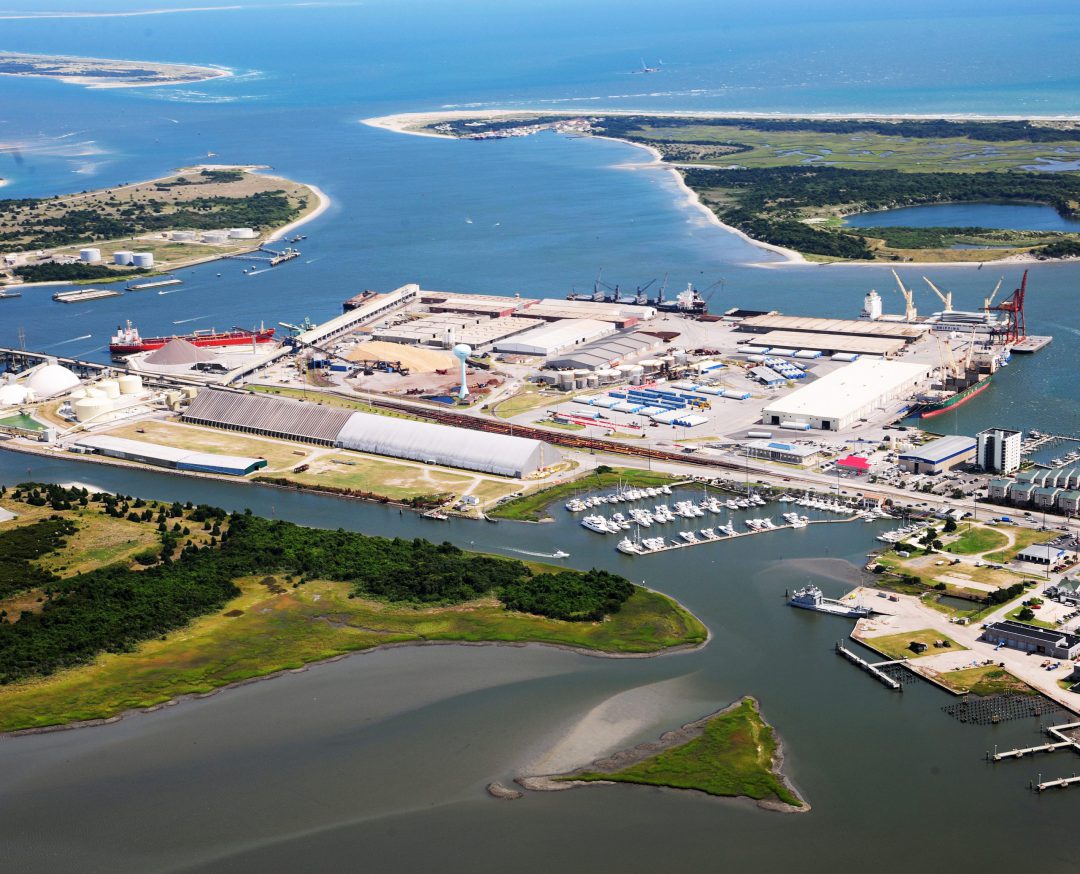The North Carolina State Ports Authority recorded year-over-year increases in volumes through the Port of Wilmington and Port of Morehead City in Fiscal Year 2020, which ended June 30, 2020.
North Carolina Ports container volume through the Port of Wilmington in FY20 increased by 4 percent over FY19. NC Ports set a record for refrigerated containers, moving 12,839 boxes, a 13 percent increase over the previous year. In total, refrigerated container volume has increased 267 percent between FY15 and FY20.
Additionally, the Port of Wilmington recorded 36 percent year-over-year growth for general cargo operations, moving a total of 2.8 million tons of bulk and breakbulk cargo in FY20. The Port of Morehead City also saw year-over-year increases in general cargo. A total of 1.1 million tons of bulk and breakbulk cargo moved through Morehead City, an increase of 2 percent over FY19.
“Despite the coronavirus pandemic, North Carolina Ports was able to report year-over-year growth in both container and general cargo business which is a testament to the ongoing hard work of our employees,” said Paul J. Cozza, Executive Director, North Carolina Ports. “We were on pace for a record year in terms of volume before an influx of blank sailings due to COVID-19. Regardless, we are pleased NC Ports was able to push through this uncertainty and record a positive performance in FY20.”
“The fact that North Carolina Ports was able to record year-over-year increases despite COVID-19 is evidence that more customers are looking to NC Ports due to our ability to offer more supply chain and value delivery options,” added Hans C.E. Bean, Chief Commercial Officer, North Carolina Ports.
Building on the positive momentum, NC Ports reached several key milestones in its more than $200 million capital improvements plan in FY20.
- Record financial performance with earnings at an all-time high.
- Completed an air draft improvement project over the Cape Fear River.
- Opened 2,600 contiguous feet of container berth space at the Port of Wilmington.
- Completed Phase 2 of its turning basin expansion project.
- Welcomed the largest vessel to the Port of Wilmington, the 13,100 TEU MV Hyundai Hope.
- Opened a new refrigerated container yard at the Port of Wilmington.
- Welcomed a new rail-mounted gantry crane at the Port of Morehead City.
In addition to improvements at the Ports of Wilmington and Morehead City, North Carolina Ports also completed construction upgrades at Charlotte Inland Port. The improvements doubled the container capacity of the inland facility by enabling the grounding of loaded and empty containers while improving cargo velocity and enhancing trucker experience with improved traffic flow. These upgrades coupled with NC Ports’ enhanced next-day intermodal rail service, the Queen City Express, enabled the Ports Authority to double rail volume moving between the Port of Wilmington and Charlotte, North Carolina.
“FY20 was an exciting year for North Carolina Ports in terms of infrastructure development. These critical infrastructure improvements enable us to tailor our growth to meet customers’ needs and better facilitate long-term plans and business projections,” said Brian E. Clark, Chief Operating Officer, North Carolina Ports. “What’s even more exciting is we have several projects that will come online in our new Fiscal Year all designed to further enhance port capabilities and global connectivity.”
Moving into Fiscal Year 2021
As North Carolina Ports moves into Fiscal Year 2021, the agency is continuing with its capital improvements plan. Other improvements in development include the container terminal master plan which will increase the Port of Wilmington’s annual throughput capacity to more than one million TEUs as well as the building of a new container truck gate complex. Together, these projects will enable NC Ports to meet the demand of increased volume on container moves at the Port of Wilmington.
The Ports Authority will also continue to press forward with long-term navigational improvements to the Wilmington Navigational Harbor. Shortly before the end of FY20, the Ports Authority received authorization from the United States Army Corp of Engineers for the Wilmington Navigational Harbor Improvement Project aimed at deepening and widening the shipping channel. The project now sits with the United States Congress. WNHIP must receive Congressional approval before any formal construction can begin.

























